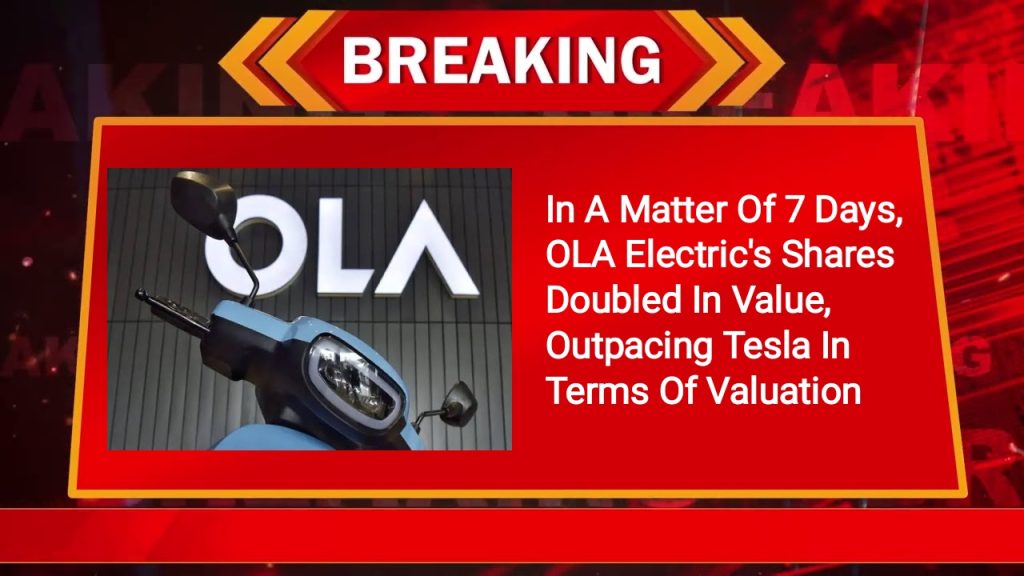On Tuesday, Ola Electric’s shares shocked investors by rising by an extra 8% and setting a new record of Rs 157.53 on the BSE (Bombay Stock Exchange). According to reports, a big deal involving 2.3 crore shares, or 0.5% of the company’s equity, took place during Tuesday’s trading session. The deal was valued at Rs 352.9 crore, with an average price per share of Rs 151. The initial public offering price at Rs 76 for the electric vehicle (EV) stock has increased by an astounding 107% in just seven trading sessions. As per a report by ET, its current valuation is greater as compared to Elon Musk’s Wall Street-listed Tesla.
Report Of A 32% Year-On-Year Growth
With a market valuation of almost Rs 66,000 Cr this morning, Ola has drawn criticism from a number of seasoned investors for being more costly than Tesla. Ola is now trading at 7.8 times its enterprise value to sales ratio (EV/sales), compared to 6.8 times for Tesla. Ola Electric claimed a 32% year-over-year growth in revenue for the June quarter, but the company still lost Rs 347 crore as opposed to Rs 267 crore during the same period last year. The business just introduced the Roadster X, Roadster, and Roadster Pro, marking its entry into the electric motorcycle market. Ola Electric has declared that it will begin integrating its cells to its cars in Q1 FY26.
After establishing a target rate of Rs 140, HSBC was the first brokerage to begin covering Ola Electric’s shares. New investors are advised by analysts to hold off on making an investment until a more firm entry point or to see the stock as a long-term, high-risk, high-reward scheme. With a long-term growth rate of 7.5% and a WACC of 10.0%, valuation of Ola Electric by HSBC is based on the DCF model.
Long-Term Growth Rate
“We evaluate Ola Electric using the DCF approach. We apply a 7.5% long-term growth rate and a 10.0% WACC. Our target price suggests an EV/EBITDA ratio of 39x and a price/sales ratio of 2.9x for FY28. In order to determine how sensitive Ola’s valuation is to certain characteristics, we also offer a sensitivity matrix. Yogesh Aggarwal of HSBC stated, “On ESG, which is Ola’s Future factory is known to be all women and has capacity for 20,000 employees.”
The four main pillars of HSBC’s investment thesis for Ola Electric are the country’s EV penetration curve, Ola’s market share & competitive intensity, the development of regulations and government assistance, and the performance or failure of the company’s battery production facility. The brokerage anticipates that regulatory support will hold steady in the next 12 to 24 months, giving Ola the opportunity to increase volumes and improve its operating leverage and withstand any potential decrease in such support.

